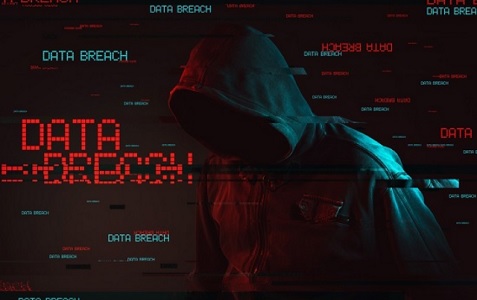
Nearly 70% of all full-time workers in the United States switched to working remotely during the COVID-19 epidemic. In the post-COVID era, approximately 58.6% of U.S. workers continue to work remotely without the possibility of ever returning to an office space. While remote jobs offer many benefits, they can also be a breeding ground of cybersecurity attacks and expose companies to greater risk.
Right Scale’s 2019 State of the Cloud Report found that 91% of businesses use public cloud while 72% use a private one. Nearly every aspect of an organization’s day is digital, including company-run platforms and data-sensitive accounts. These drastic migrations create a host of new and increased risks.
It’s becoming more important than ever to evaluate your company’s vulnerability as cybersecurity threats keep evolving. We’ll be walking you through five common cybersecurity Fayetteville NC threats that businesses face, as well as three tips for avoiding them.
Five Cybersecurity Threats to Businesses in 2021
1. Phishing
Phishing refers to a hacking technique that tricks users into downloading malicious messages. The scheme looks like regular email and includes legitimate links, attachments, business names, logos, and business names. The email convinces users to click a link or download an attachment. The subject line of phishing emails may be clickbait. Whale phishing, another type of email phishing, is targeted at executives. Spear-phishing is another option that sends emails to specific employees of a company to steal information.
Email phishing is the most common form of phishing. Smishing is a form of phishing that sends SMS messages to encourage clicks on dangerous links. Vishing, on the other hand, sends fake phone calls and voice messages posing as legitimate businesses. Phishing via search engines is a more recent form of phishing. This involves hackers creating fake websites that rank high in search engine results to steal customers’ information.
According to Cisco–2021 Cyber security threats trends, phishing and crypto topped the list. 86% of organizations had at least one user connected to a phishing website in a recent survey. A wrong click by an employee could expose a company to huge risk.
2. Malware
Malware, also known by malicious software, can slow down or stop computers from functioning completely. Malware can cause computer systems to be destroyed by trojan malware, spyware and viruses, ransomware and adware, as well as worms.
Clicking an infected link can allow malware to be downloaded onto your computer. Hackers can access your company’s passwords and banking information, as well as files and personnel files, once malware has been installed on a computer system.
Companies reported that 35% of all malware attacks they faced in the past year used previously unknown malware or methods. This percentage will likely rise as more workers work remotely.
3. Ransomware
Ransomware is a type of malware that encrypts user’s computer systems. Users are unable to access their files or systems after a ransomware attack is launched. Users will need to pay ransom to cybercriminals in order to be able to access their systems again.
Bitcoin is often used to pay ransom payments. Cybercriminals might also ask for other payment methods, such as Amazon gift certificates. Ransom charges can vary greatly from hundreds to thousands of dollars, or even more. Many ransom payment organizations don’t have access to their systems.
Ransomware can be spread via a malicious download sent in an email. Attacks can be directed at individual employees or whole organizations. A notable 58% of US businesses reported revenue loss as a direct result of ransomware attacks during the pandemic.
4. Data Breach
Data breach is when sensitive data are stolen from a system that does not have authorization. This includes, but is not limited to, credit card numbers and social security numbers. It also includes names, home addresses, email addresses, passwords, and user names.
Breaches can be carried out through point-of sale (POS) systems, or via a network attack. Cybercriminals will likely launch a network attack if they find a flaw in an organization’s online security system, and then use that weakness to penetrate the system. Hackers can also use social attacks to trick employees into giving access to the network. They may fall for tricks such as downloading harmful attachments or giving out login credentials.
A data breach analysis by the Identity Theft Resource Center, (ITRC) shows that the number of data breaches reported in the United States has risen to 38% during the second quarter 2021. Businesses must immediately take action to stop data breaches and fix the problem. Failure to act quickly could result in a damaged reputation and possible fines of thousands to millions.
5. Compromised Passwords
Most often, compromised passwords are caused by users entering their login credentials on an untrusted website. Accounts that have the same username and password combination are more susceptible to hackers. Multiple passwords can make your system more vulnerable to hackers. This puts multiple accounts at risk.
Always use unique passwords that are difficult to guess when creating passwords for company accounts. For maximum security, tell your employees that 51% of respondents use the same passwords to access their personal and work accounts.
 Three Tips to Avoid Cybersecurity Threats
Three Tips to Avoid Cybersecurity Threats
1. Build Your Expertise–Internally and Externally
Small- and medium-sized companies, especially, can struggle to hire the right people to protect them from cyber threats. It can be costly to hire a security manager or engineer, and it might be difficult to assess the hard skills of an individual. An in-house team will provide you with the best long-term accountability.
Many companies choose to hire an outside firm or freelance an IT support professional. UpCity, a company that helps small businesses find cybersecurity companies they can trust, can also help them with hiring a cybersecurity company. Working with an outside company has two advantages. They can provide 24/7 monitoring of attacks that could occur at any moment and are experts who keep up to date on the evolving landscape of cyberattacks.
2. Educate your team
While some of the best cybersecurity practices might seem obvious, it is important to inform your entire team about them and make sure everyone is on the same page. Discuss with employees the importance of strong passwords and how to use shared networks safely. Also, discuss your internet use guidelines and how to protect customer data.
Your team should be able to identify phishing attacks. This includes looking for URLs and email addresses that are very close, but not exact. Also, using language that is unclear or misspelled. Be cautious about asking for passwords and other personal information. Cyberattacks can strike even the most experienced security personnel. It is possible to quickly catch an attack by giving employees something to look out for.
One UpCity employee saw many outbound emails that were not sent from their account last year and realized that their password had been compromised. They reviewed their email settings and changed their password immediately. An attacker set up a mail filter to forward all mail to an external address. This was found and removed. An insufficient response could have overlooked this detail, which allowed the attacker to potentially gain access to their password and other accounts.
3. Make a Cybersecurity Policy
Your cybersecurity policy should be updated regularly to reflect new attacks. The policy’s core should cover protecting devices, including up-to-date browsers, firewalls and encryption, multi-factor authentication (not only strong passwords but secondary methods of authentication), data protection (including how to deal with customer data and what to send via email).
You should make your policies easily accessible to all employees. They should also be reviewed regularly to ensure that everyone understands and follows the correct protocol.
A cybersecurity plan is essential. It is vital that every company, regardless of its size, understands current cyber threats and how to combat them.
A plan that is well-executed and regularly reviewed is the best way to protect customer and company information. Cybersecurity should not be put on the back burner, regardless of whether you have in-house knowledge or a trusted partner outside. Protecting your business is as simple as understanding the latest threats and how to avoid them.
Call SpartanTec, Inc. now if you need the help of IT experts in boosting your company’s cybersecurity.
SpartanTec, Inc.
Fayetteville, NC 28304
(910) 745-7776
http://manageditservicesfayetteville.com
Serving: Myrtle Beach, North Myrtle Beach, Columbia, Wilmington, Fayetteville, Florence, Charleston





 Three Tips to Avoid Cybersecurity Threats
Three Tips to Avoid Cybersecurity Threats